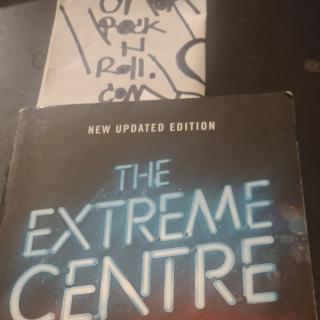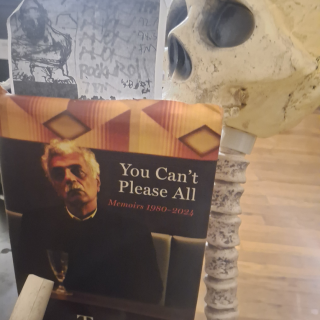Advertisement
A central motif of the new horror film 28 Years Later is its statement about what normal looks like. From the outset, normality is encoded in the battle between normal humans vs abnormal, zombified ones. But another subtler message also makes itself known: normal isn’t about diversity. The film ministers to the idea of the ‘unwelcome other’ by apparently only casting people of colour in the role of zombies. And so, the real horror is in the thinking that seems to have informed the casting.
The film re-centres whiteness, under the guise of genre convention and nostalgia. In so doing, it echoes a lingering cultural mood that quietly reinforces exclusion. I should know. I’m Black and I’ve seen this mood afoot in many instances of procedural fluency - that automatic application of actions and behaviours that, in the case of race, leads to exclusion.
I live in a predominantly white town in the Midlands. It’s only a 30-minute train ride away from the second largest city in the UK - Birmingham - a place where diversity is the norm. Parts of my town seem to accept this; other parts politely ignore it. What I know for sure is that I’m regularly profiled on entering local shops. After one such incident, where two shop assistants were moved by some mindless urge to trail me from the moment I walked in, I promptly emailed their head office to complain.
In my email I explained how one assistant had imposed herself shoulder to shoulder with me, clanking coathangers loudly in a faux performance of sorting out the rack of clothes. I took it as a veiled attempt to warn me off causing any trouble, presumably of the shoplifting kind. This individual surveillance then threaded its way to the next assistant when I pressed on into the interior of the shop. She took over the surveillance with creative zeal. As I stopped by a shelf with a few meagre books, she came up to tell me that “a customer” was on the line and wanted to know about whether a book was in stock (a cordless landline was conveniently clamped to her right ear and boastfully angled towards me). It’s a well-known clothes and accessories shop with a very lite line in books, more there, it seems, for the affective atmosphere the shop tries to create. Between allowing for the possibility there really was a caller and falling on my sword for being wrong in the spidey sense that I’d had about her profiling me, I went with my gut.
In my email I asked head office to watch my humiliation unfold on their CCTV. I expected their response to at least feign that there was an innocent explanation; instead, they glossed over what had happened. Though there was no admission of guilt, they shared that they felt that all customers should have a good experience and they gave me a voucher which I promptly ignored.
The procedural fluency that came to life in that shop, in all its relentless urge to kettle blackness, with no finesse attempted, just raw instinct and persistence, seems to also be behind what operationalised the casting decisions of the film. Neither of the shop assistants had stopped to question where their behaviour came from or whether it was justified. It seems those behind the casting decisions are guilty of the same thing.
I assumed I’d get a different experience from 28 Years Later. I’m not typically a fan of horror films but it’s a film that has generated much buzz, and having loved the cultural moment with the James Bond film that introduced us to a black Miss Moneypenny (a sublime cinematic experience that I get the impression others in the screening of 28 Years Later got) and having also missed out more recently on the Barbie one, I wanted to be part of this one. 28 Years Later delivers on its genre - blood, guts and gore galore - and when the scene shifts to the bucolic safehaven of the island with its apparently all-white islanders, I got that the juxtaposition of the chaos of a zombie bloodfest and the calm force in the villagers' unity was supposed to give the audience a rising sense of unease. But for me, the real unease was the realisation that this film wasn’t made for me.
In the brief euphoric moments that punctuated the film - the singing of a rousing ditty, the islanders stoically going about their everyday business, and the nostalgia pumping from the images of a bygone era of British industriousness - I was reminded about how this film upped the ante on what theorists have long understood: what makes a genre enjoyable to the audience is that its conventions are familiar and it upholds a positive self-image. But, when the genre scrubs out certain realities, it begins to feel more like a doctrine.
When the film does have notable roles for people of colour, camera angles force you to notice them in an orientalist way. In one extended close-up, there is a grotesque worm-eating zombie with East Asian features crawling on the ground. Even more screen time is given to the alpha zombie whose Amazonian build fills up the screen, with the camera often lingering on its well-endowed nether regions.
Together, it all suggests a dated anxiety about changing norms. The Victorian-esque orientalism in the characterisation of the zombies only matters in the mind of those who really want to resurrect such dead ideas and why cater to them? Whether there were explicit conversations about who to cast in which roles is not something I can answer. But, after having survived private and public school, degrees at two red brick institutions, and a career in education ducking and diving racist forms of procedural fluency, I know that just like no dialogue took place between the two shop assistants, conversations don't have to happen verbally or explicitly for there to be consequences. It can happen in coded language and knowing looks that signal some shared understanding.
The film does end with a question mark over what is normal through the arrival of a new group of “normal” all-white humans, dressed in the sartorial style of Jimmy Saville (the fallen national hero with predatory sexual perversions), which hints at the trouble to come. But, for the first film in the trilogy, things are not looking good. Perhaps the upcoming instalments will be different. But if the casting mentality wasn’t of age for this first one, I fear there’s little hope for the next ones.
An absence of diversity doesn’t reflect reality. The film can’t be “neutral” for this reason. The erasure of people of colour in certain aspects of the film and the casting choices quietly slip into existing racial stereotypes in ways that come across as a reaction to inclusion. Whatever constitutes our knowledge - whether factual or not - becomes part of our procedural fluency when we’re tested in moments of real or perceived crisis. It’s sadly in such moments that our values don’t match our behaviour. Concerningly, in these times of growing right-wing populism, 28 Years Later’s lazy casting is a difficult watch for the wrong reasons.



